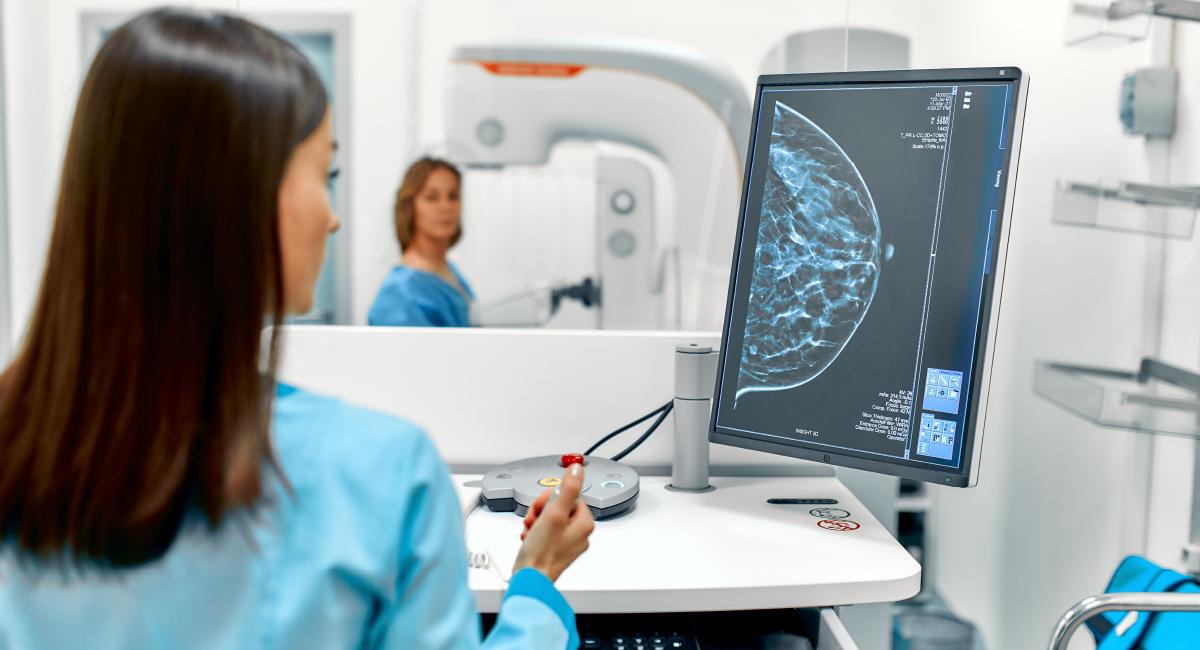Breast cancer is the most common cancer among women in Singapore, with around 1,800 new cases diagnosed each year. Early detection is key to successful treatment, and understanding the two primary breast cancer screening methods — mammograms and ultrasounds — can help you make informed decisions about your health.
Why Breast Cancer Screening Matters
Early detection of breast cancer significantly increases the chances of successful treatment and survival. Regular screening helps catch cancer at an earlier stage when it is more treatable. Women are generally advised to begin regular screenings from age 40 but personal risk factors, such as family history, may necessitate earlier or more frequent screening.
Mammogram: The Standard for Breast Cancer Screening
A mammogram is an x-ray imaging technique specifically designed to examine breast tissue. It is the most commonly used method for breast cancer screening and is often considered the gold standard.
Studies have shown that mammograms can detect breast cancer up to three years before a lump can be felt, which allows for earlier intervention. For women aged 40 and above, mammograms can reduce the risk of dying from breast cancer by up to 50%.
In Singapore, it’s recommended that women aged 50 and above undergo mammograms every two years. These regular screenings have contributed significantly to early detection and improved survival rates, with the five-year survival rate for stage I breast cancer at 90%, and 80% for stage II.
How Does a Mammogram Work?
During a mammogram, the breast is compressed between two plates to spread out the breast tissue. X-ray images are taken from different angles to capture a detailed view of the breast. The process takes only a few minutes and is generally quick.
Benefits of a Mammogram
- Early Detection: Mammograms can detect tumours that are too small to be felt, often before symptoms appear.
- Proven Effectiveness: Mammograms have been shown to reduce breast cancer mortality by identifying cancers at an earlier, more treatable stage.
- Good for Dense Tissue: Digital mammograms, in particular, are effective for women with dense breast tissue, as they provide higher contrast images that make abnormalities easier to spot.
Dense breast tissue contains more glandular and fibrous tissue and less fatty tissue. On a mammogram, both dense tissue and tumours appear white, making it harder to distinguish between the two. Women with dense breast tissue have a higher risk of breast cancer, and this density can obscure small tumours on mammograms.
Considerations
- Discomfort: Some women may find the breast compression during a mammogram uncomfortable.
- Radiation Exposure: Mammograms involve a very small amount of radiation, but the benefits far outweigh the risks.
Breast Ultrasound: A Useful Complement to Mammograms
A breast ultrasound uses sound waves to create images of the breast tissue. It is often used as a complementary tool to mammograms, particularly in cases where mammograms alone may not provide sufficient information.
How Does a Breast Ultrasound Work?
During an ultrasound, a technician applies a gel to the breast and uses a handheld device called a transducer to send sound waves into the breast tissue. These waves bounce back, creating images of the internal structure of the breast.
Benefits of a Breast Ultrasound
- No Radiation: Ultrasounds do not use radiation, making them a safer option for women who may need frequent screenings, such as those with higher risk factors.
- Better for Certain Conditions: Ultrasounds are particularly useful for examining lumps that can be felt but not seen on a mammogram and for differentiating between solid masses and cysts.
- Comfort: An ultrasound is generally painless and does not require breast compression, which can make it a more comfortable option for some women.
Considerations
Not a Replacement for Mammograms: Ultrasounds alone aren’t recommended for routine breast cancer screening because they may miss some early signs of cancer.
Which Screening is Right for You?
Both mammograms and ultrasounds are effective tools in breast cancer screening, but they serve different purposes:
For Routine Screening: Mammograms are typically recommended for women aged 40 and above as the primary method for breast cancer detection.
For Women with Dense Breasts or Lumps: If you have dense breast tissue or your mammogram shows something unusual, your doctor may recommend a follow-up ultrasound.
For Younger Women: Ultrasounds can be useful for younger women, especially those with risk factors or dense breasts, as mammograms are less effective for this group.
Prioritise Your Health: Get Screened
Whether you’re due for your regular mammogram or need a follow-up ultrasound, knowing the differences between these screening options can help you make informed decisions about your breast health.
In Singapore, women have the option to undergo health checks and breast cancer screenings at various places, so be sure to choose the one that best suits your needs, whether it’s a clinic or home-based option, or at integrated health screening and imaging centre that combines both health screening and imaging services.
Breast cancer screening is just one important part of a comprehensive women’s health screening. Regular screenings not only help detect breast cancer early but also allow you to monitor other aspects of your health, such as heart health, bone health, and overall wellness. By scheduling a health screening, you’re taking a proactive approach to safeguard your well-being and address any potential issues before they become serious.
To learn more about our comprehensive Women’s Health Screening package at DA Orchard MedSuites and schedule your screening, click here.








